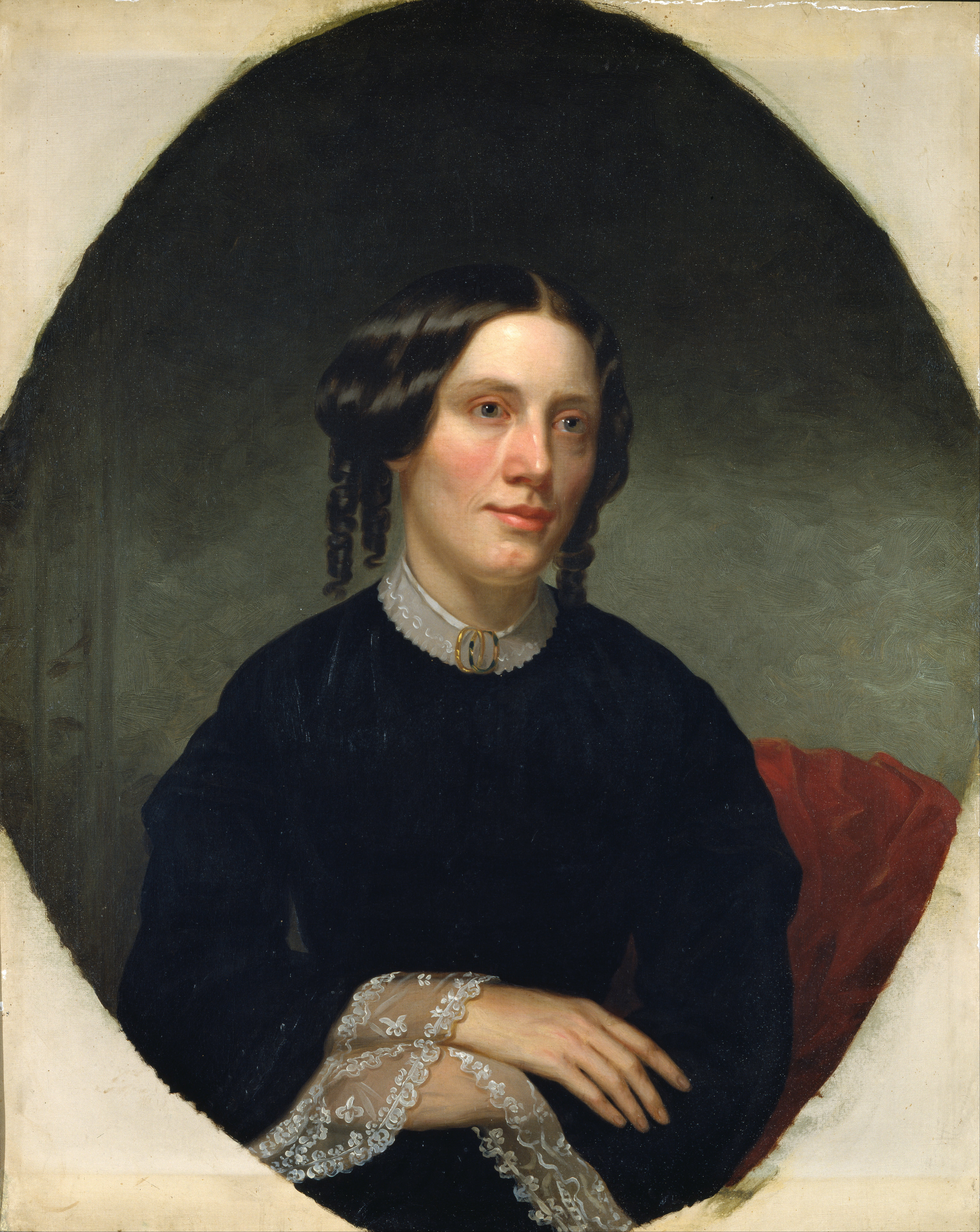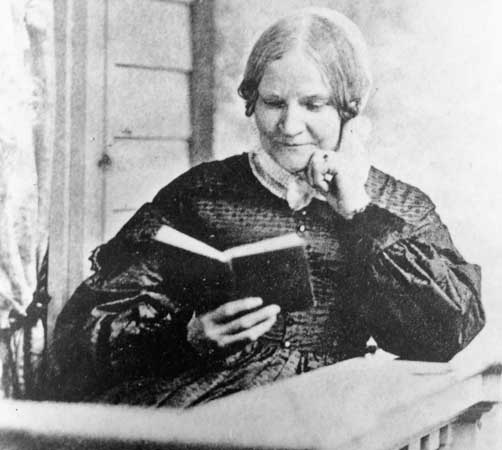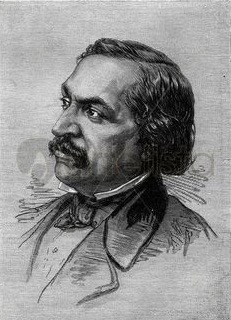|
Tragic Mulatto
The tragic mulatto is a stereotypical fictional character that appeared in American literature during the 19th and 20th centuries, starting in 1837. The "tragic mulatto" is a stereotypical mixed-race person (a "mulatto"), who is assumed to be depressed, or even suicidal, because they fail to completely fit in the "white world" or the "black world". As such, the "tragic mulatto" is depicted as the victim of the society that is divided by race, where there is no place for one who is neither completely "black" nor "white". Tragic mulatta The female "tragic octoroon" was a stock character of abolitionist literature: a light-skinned woman, raised in her father's household as though she were white, until his bankruptcy or death has her reduced to a menial position and sold. She may even be unaware of her status before being so reduced.Kathy Davis.Headnote to Lydia Maria Child's 'The Quadroons' and 'Slavery's Pleasant Homes'. This character allowed abolitionists to draw attention to ... [...More Info...] [...Related Items...] OR: [Wikipedia] [Google] [Baidu] |
Fictional Character
In fiction, a character (or speaker, in poetry) is a person or other being in a narrative (such as a novel, play, radio or television series, music, film, or video game). The character may be entirely fictional or based on a real-life person, in which case the distinction of a "fictional" versus "real" character may be made. Derived from the Ancient Greek word , the English word dates from the Restoration, although it became widely used after its appearance in ''Tom Jones'' by Henry Fielding in 1749. From this, the sense of "a part played by an actor" developed.Harrison (1998, 51-2) quotation: (Before this development, the term '' dramatis personae'', naturalized in English from Latin and meaning "masks of the drama," encapsulated the notion of characters from the literal aspect of masks.) Character, particularly when enacted by an actor in the theatre or cinema, involves "the illusion of being a human person". In literature, characters guide readers through their stories, ... [...More Info...] [...Related Items...] OR: [Wikipedia] [Google] [Baidu] |
Passing (novel)
''Passing'' is a novel by American author Nella Larsen, first published in 1929. Set primarily in the Harlem neighborhood of New York City in the 1920s, the story centers on the reunion of two childhood friends—Clare Kendry and Irene Redfield—and their increasing fascination with each other's lives. The title refers to the practice of " racial passing", and is a key element of the novel. Clare Kendry's attempt to pass as white for her husband, John (Jack) Bellew, is a significant depiction in the novel and a catalyst for the tragic events. Larsen's exploration of race was informed by her own mixed racial heritage and the increasingly common practice of racial passing in the 1920s. Praised upon publication, the novel has since been celebrated in modern scholarship for its complex depiction of race, gender, and sexuality, and the book is the subject of considerable scholarly criticism. As one of only two novels that Larsen wrote, the novel has been significant in placing its aut ... [...More Info...] [...Related Items...] OR: [Wikipedia] [Google] [Baidu] |
University Of North Carolina Press
The University of North Carolina Press (or UNC Press), founded in 1922, is a university press that is part of the University of North Carolina. It was the first university press founded in the Southern United States. It is a member of the Association of University Presses (AUPresses) and publishes both scholarly and general-interest books and journals. According to its website, UNC Press advances "the University of North Carolina's triple mission of teaching, research, and public service by publishing first-rate books and journals for students, scholars, and general readers." It receives support from the state of North Carolina and the contributions of individual and institutional donors who created its endowment. Its headquarters are located in Chapel Hill. History In 1922, on the campus of the nation's oldest state university, University of North Carolina at Chapel Hill, thirteen educators and civic leaders met to charter a publishing house. Their creation, the University o ... [...More Info...] [...Related Items...] OR: [Wikipedia] [Google] [Baidu] |
Harriet Beecher Stowe
Harriet Elisabeth Beecher Stowe (; June 14, 1811 – July 1, 1896) was an American author and abolitionist. She came from the religious Beecher family and became best known for her novel '' Uncle Tom's Cabin'' (1852), which depicts the harsh conditions experienced by enslaved African Americans. The book reached an audience of millions as a novel and play, and became influential in the United States and in Great Britain, energizing anti-slavery forces in the American North, while provoking widespread anger in the South. Stowe wrote 30 books, including novels, three travel memoirs, and collections of articles and letters. She was influential both for her writings and for her public stances and debates on social issues of the day. Life and work Harriet Elisabeth Beecher was born in Litchfield, Connecticut on June 14, 1811.McFarland, Philip. ''Loves of Harriet Beecher Stowe''. New York: Grove Press, 2007: 112. She was the sixth of 11 children born to outspoken Calvinist prea ... [...More Info...] [...Related Items...] OR: [Wikipedia] [Google] [Baidu] |
Uncle Tom's Cabin
''Uncle Tom's Cabin; or, Life Among the Lowly'' is an anti-slavery novel by American author Harriet Beecher Stowe. Published in two volumes in 1852, the novel had a profound effect on attitudes toward African Americans and slavery in the U.S., and is said to have "helped lay the groundwork for the mericanCivil War". Stowe, a Connecticut-born woman of English descent, was part of the religious Beecher family and an active abolitionist. She wrote the sentimental novel to depict the reality of slavery while also asserting that Christian love could overcome slavery. The novel focuses on the character of Uncle Tom, a long-suffering black slave around whom the stories of the other characters revolve. In the United States, ''Uncle Tom's Cabin'' was the best-selling novel and the second best-selling book of the 19th century, following the Bible. It is credited with helping fuel the abolitionist cause in the 1850s. The influence attributed to the book was so great that a likely ... [...More Info...] [...Related Items...] OR: [Wikipedia] [Google] [Baidu] |
The Quadroons
"The Quadroons" is a short story written by American writer Lydia Maria Child (1802-1880) and published in '' The Liberty Bell'' in 1842. The influential short story depicts the life and death of a mixed-race woman and her daughter in early nineteenth century America, a slave-owning society. Child originated the trope of the "tragic mulatta", which became well-known in the anti-slavery literature of the time, was taken up also by many other writers. Years later, Harriet Jacobs's autobiography ''Incidents in the Life of a Slave Girl'' (edited by Lydia Maria Child) featured the same theme, but with important changes, effectively giving her an agency Child's main characters never had. Background Lydia Maria Child (1802-1880) was an influential writer who advocated for Native Americans, women, and enslaved people. Already an abolitionist, she and her husband joined a group of antislavery reformers under the influence of William Lloyd Garrison in the 1830s. Scholars credit Child ... [...More Info...] [...Related Items...] OR: [Wikipedia] [Google] [Baidu] |
Sab (novel)
''Sab'' is a novel written by Gertrudis Gomez de Avellaneda and published in Madrid in 1841. The novel centers around the character of Sab, a mulato slave who is in love with his white master's daughter Carlota. The pain of Sab's unrequited love for Carlota leads Sab to his own death, which occurs during Carlota's wedding to Enrique Otway. The novel was not published in Cuba until 1914. ''Sab'' is regarded by some scholars as an anti-slavery novel, and some have also suggested that it criticizes the institution of marriage. The novel was written a decade before Harriet Beecher Stowe's ''Uncle Tom's Cabin ''Uncle Tom's Cabin; or, Life Among the Lowly'' is an anti-slavery novel by American author Harriet Beecher Stowe. Published in two volumes in 1852, the novel had a profound effect on attitudes toward African Americans and slavery in the U ...''. According to Nina M. Scott, ''Sab'', just like Beecher Stowe's novel, criticizes slavery as a displacement of what Elizabeth ... [...More Info...] [...Related Items...] OR: [Wikipedia] [Google] [Baidu] |
Le Mulâtre
"Le Mulâtre" ("The Mulatto") is a short story by Victor Séjour, a free person of color and Creole of color born and raised in New Orleans, Louisiana. It was written in French, Séjour's first language, and published in the Paris abolitionist journal '' Revue des Colonies'' in 1837. It is the earliest extant work of fiction by an African-American author. It was noted as such when it was first translated in English, appearing in the first edition of the '' Norton Anthology of African American Literature'' in 1997. Before the importance of French literature by writers of color from New Orleans was recognized, histories of African-American fiction had conventionally begun with "The Heroic Slave" by Frederick Douglass in 1852, and "The Two Offers" by Frances Ellen Watkins Harper in 1859 had been considered the first African-American short story. French-language literature flourished from the late 18th and into the early 20th century in Louisiana, and the francophone literary c ... [...More Info...] [...Related Items...] OR: [Wikipedia] [Google] [Baidu] |
Novels
A novel is a relatively long work of narrative fiction, typically written in prose and published as a book. The present English word for a long work of prose fiction derives from the for "new", "news", or "short story of something new", itself from the la, novella, a singular noun use of the neuter plural of ''novellus'', diminutive of ''novus'', meaning "new". Some novelists, including Nathaniel Hawthorne, Herman Melville, Ann Radcliffe, John Cowper Powys, preferred the term Romance (literary fiction), "romance" to describe their novels. According to Margaret Doody, the novel has "a continuous and comprehensive history of about two thousand years", with its origins in the Ancient Greek novel, Ancient Greek and Roman novel, in Chivalric romance, and in the tradition of the Italian renaissance novella.Margaret Anne Doody''The True Story of the Novel'' New Brunswick, NJ: Rutgers University Press, 1996, rept. 1997, p. 1. Retrieved 25 April 2014. The ancient romance form was ... [...More Info...] [...Related Items...] OR: [Wikipedia] [Google] [Baidu] |
Slavery
Slavery and enslavement are both the state and the condition of being a slave—someone forbidden to quit one's service for an enslaver, and who is treated by the enslaver as property. Slavery typically involves slaves being made to perform some form of work while also having their location or residence dictated by the enslaver. Many historical cases of enslavement occurred as a result of breaking the law, becoming indebted, or suffering a military defeat; other forms of slavery were instituted along demographic lines such as Racism, race. Slaves may be kept in bondage for life or for a fixed period of time, after which they would be Manumission, granted freedom. Although slavery is usually involuntary and involves coercion, there are also cases where people voluntary slavery, voluntarily enter into slavery to pay a debt or earn money due to poverty. In the course of human history, slavery was a typical feature of civilization, and was legal in most societies, but it is no ... [...More Info...] [...Related Items...] OR: [Wikipedia] [Google] [Baidu] |
Upper-class
Upper class in modern societies is the social class composed of people who hold the highest social status, usually are the wealthiest members of class society, and wield the greatest political power. According to this view, the upper class is generally distinguished by immense wealth which is passed on from generation to generation. Prior to the 20th century, the emphasis was on ''aristocracy'', which emphasized generations of inherited noble status, not just recent wealth. Because the upper classes of a society may no longer rule the society in which they are living, they are often referred to as the old upper classes, and they are often culturally distinct from the newly rich middle classes that tend to dominate public life in modern social democracies. According to the latter view held by the traditional upper classes, no amount of individual wealth or fame would make a person from an undistinguished background into a member of the upper class as one must be born into a famil ... [...More Info...] [...Related Items...] OR: [Wikipedia] [Google] [Baidu] |
Middle-class
The middle class refers to a class of people in the middle of a social hierarchy, often defined by occupation, income, education, or social status. The term has historically been associated with modernity, capitalism and political debate. Common definitions for the middle class range from the middle fifth of individuals on a nation's income ladder, to everyone but the poorest and wealthiest 20%. Theories like "Paradox of Interest" use decile groups and wealth distribution data to determine the size and wealth share of the middle class. From a Marxist standpoint, middle class initially referred to the ' bourgeoisie,' as distinct from nobility. With the development of capitalist societies and further inclusion of the bourgeoisie into the ruling class, middle class has been more closely identified by Marxist scholars with the term ' petite bourgeoisie.' There has been significant global middle-class growth over time. In February 2009, ''The Economist'' asserted that over half ... [...More Info...] [...Related Items...] OR: [Wikipedia] [Google] [Baidu] |









